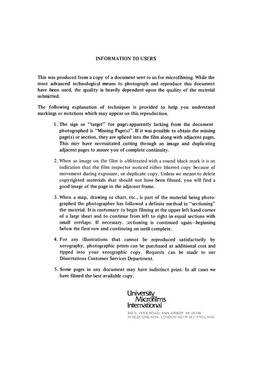| dc.contributor.author | Kesselring, Randall G., | en_US |
| dc.date.accessioned | 2013-08-16T12:28:04Z | |
| dc.date.available | 2013-08-16T12:28:04Z | |
| dc.date.issued | 1980 | en_US |
| dc.identifier.uri | https://hdl.handle.net/11244/4737 | |
| dc.description.abstract | Section 8 (a) (2) of the Taft-Hartley Act makes it unlawful for an employer "to dominate or interfere with the formation or administration of any labor organization or contribute financial or other support to it." This study examines 832 8 (a) (2) cases heard before the National Labor Relations Board from 1950 to 1974. These cases are divided into four basic areas under which they are closely analyzed. The first area involves actions which the Board has traditionally held indicative of company domination of a union. Discriminatory treatment of employees constitutes the second major type of case to be scrutinized. The third distinctive area included in the study is financial and material support of a union by an employer. The most complicated analysis occurs in the fourth section which examines employer contracts with and recognition of unions. Although it was predicted that 8 (a) (2) cases would disappear, large numbers of cases are filed each year. The trend has been away from cases where employers form and dominate unaffiliated unions to those where employers favor one affiliated union over another. | en_US |
| dc.format.extent | vi, 186 leaves : | en_US |
| dc.publisher | The University of Oklahoma. | en_US |
| dc.subject | Economics, Commerce-Business. | en_US |
| dc.subject | Economics. | en_US |
| dc.title | A case analysis of section 8(a) (2) of the Taft-Hartley Act, 1950 to 1974. | en_US |
| dc.type | Thesis | en_US |
| dc.thesis.degree | Ph.D. | en_US |
| dc.note | Source: Dissertation Abstracts International, Volume: 41-03, Section: A, page: 1155. | en_US |
| ou.identifier | (UMI)AAI8019126 | en_US |
| ou.group | Other | |
